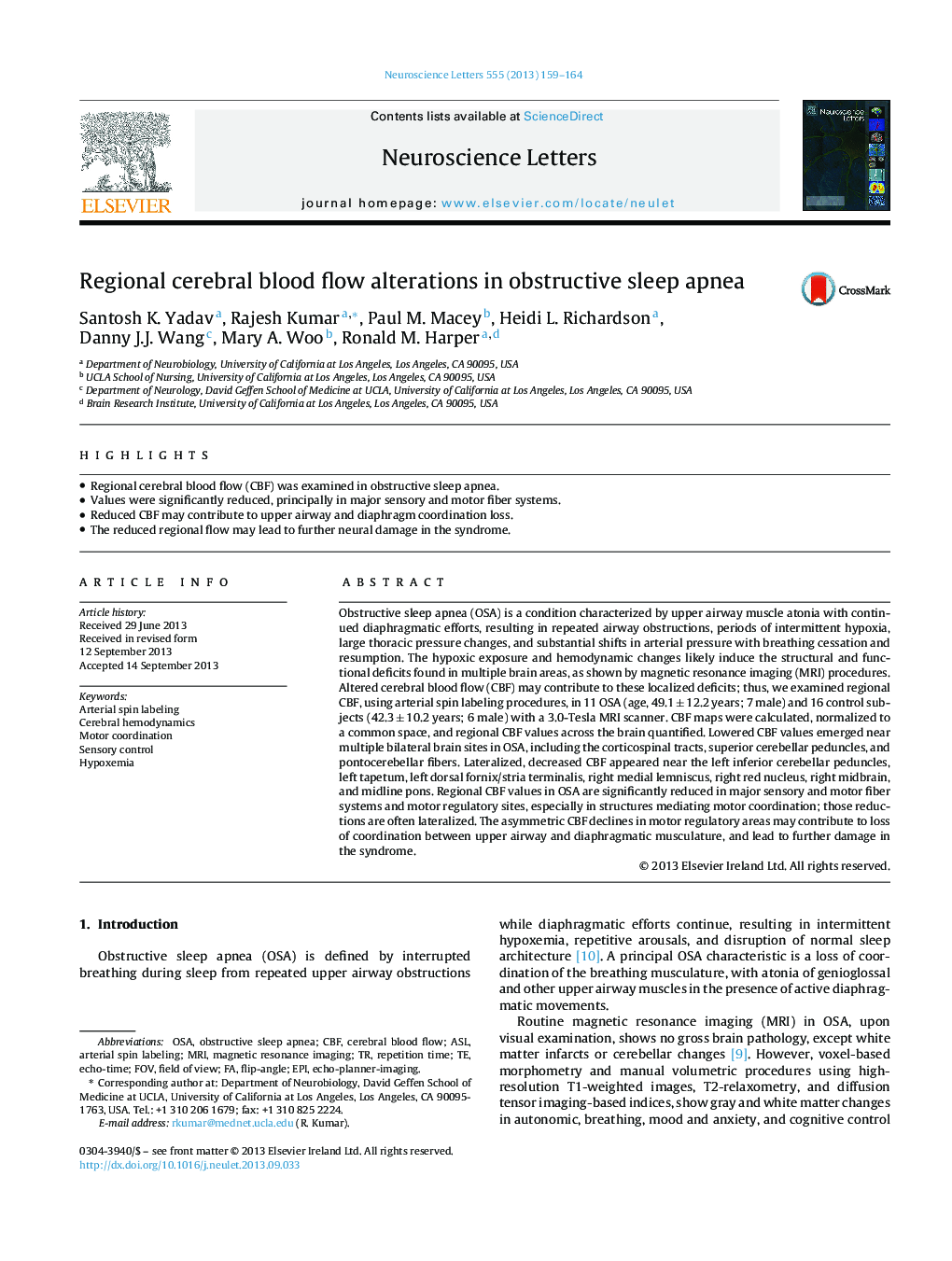| Article ID | Journal | Published Year | Pages | File Type |
|---|---|---|---|---|
| 4343925 | Neuroscience Letters | 2013 | 6 Pages |
•Regional cerebral blood flow (CBF) was examined in obstructive sleep apnea.•Values were significantly reduced, principally in major sensory and motor fiber systems.•Reduced CBF may contribute to upper airway and diaphragm coordination loss.•The reduced regional flow may lead to further neural damage in the syndrome.
Obstructive sleep apnea (OSA) is a condition characterized by upper airway muscle atonia with continued diaphragmatic efforts, resulting in repeated airway obstructions, periods of intermittent hypoxia, large thoracic pressure changes, and substantial shifts in arterial pressure with breathing cessation and resumption. The hypoxic exposure and hemodynamic changes likely induce the structural and functional deficits found in multiple brain areas, as shown by magnetic resonance imaging (MRI) procedures. Altered cerebral blood flow (CBF) may contribute to these localized deficits; thus, we examined regional CBF, using arterial spin labeling procedures, in 11 OSA (age, 49.1 ± 12.2 years; 7 male) and 16 control subjects (42.3 ± 10.2 years; 6 male) with a 3.0-Tesla MRI scanner. CBF maps were calculated, normalized to a common space, and regional CBF values across the brain quantified. Lowered CBF values emerged near multiple bilateral brain sites in OSA, including the corticospinal tracts, superior cerebellar peduncles, and pontocerebellar fibers. Lateralized, decreased CBF appeared near the left inferior cerebellar peduncles, left tapetum, left dorsal fornix/stria terminalis, right medial lemniscus, right red nucleus, right midbrain, and midline pons. Regional CBF values in OSA are significantly reduced in major sensory and motor fiber systems and motor regulatory sites, especially in structures mediating motor coordination; those reductions are often lateralized. The asymmetric CBF declines in motor regulatory areas may contribute to loss of coordination between upper airway and diaphragmatic musculature, and lead to further damage in the syndrome.
